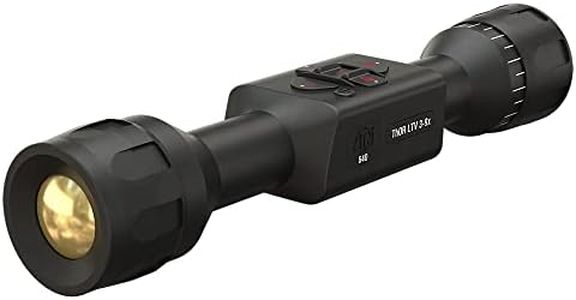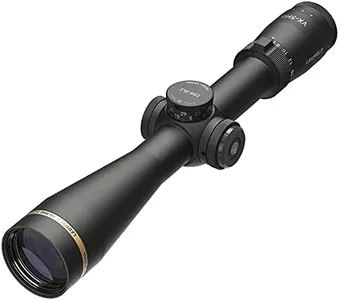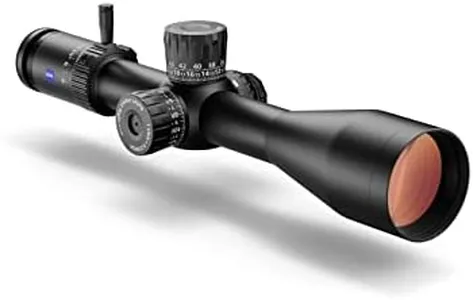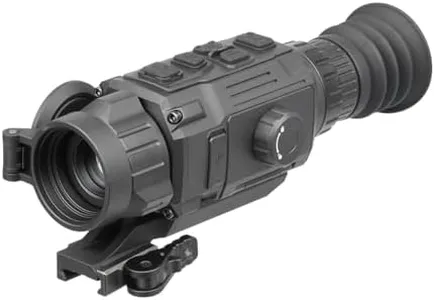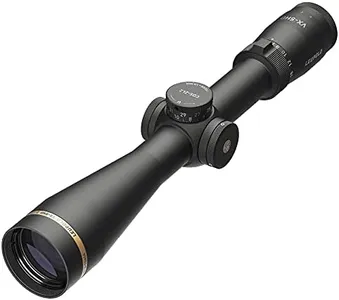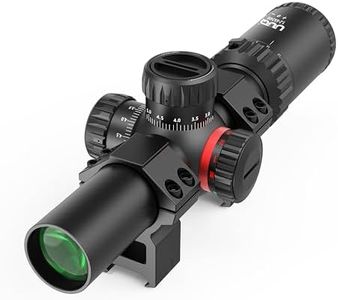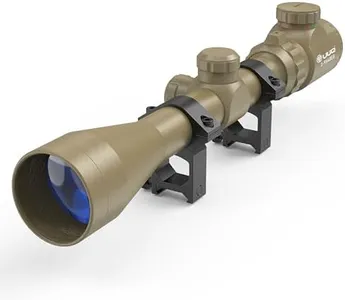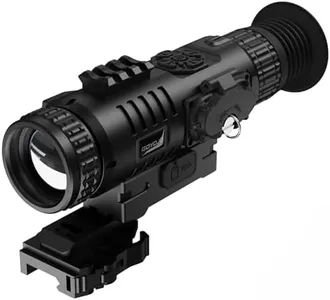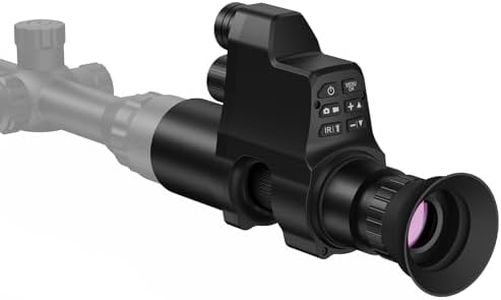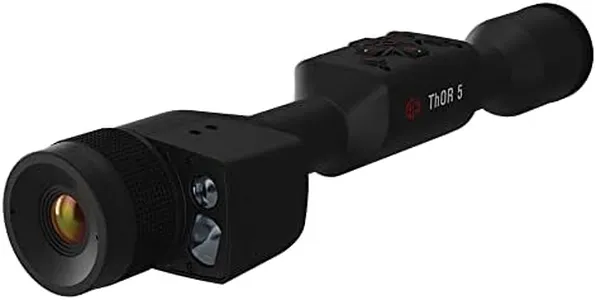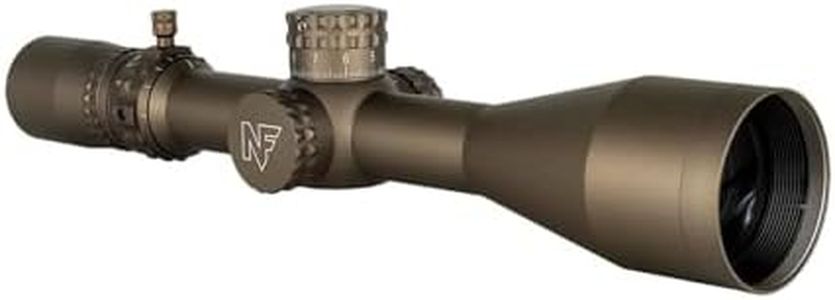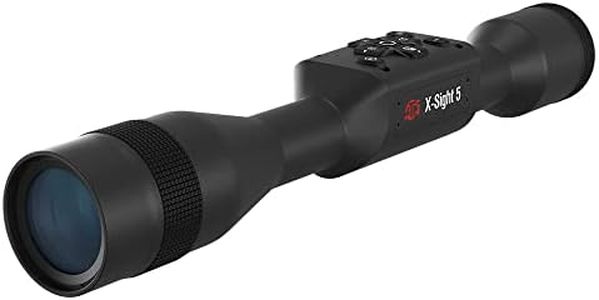10 Best Hunting Scopes 2025 in the United States
Our technology thoroughly searches through the online shopping world, reviewing hundreds of sites. We then process and analyze this information, updating in real-time to bring you the latest top-rated products. This way, you always get the best and most current options available.

Our Top Picks
Winner
Leupold VX-5HD 3-15x44 (30mm) CDS-ZL2 Side Focus Illum. FireDot Duplex Reticle Riflescope
Most important from
358 reviews
The Leupold VX-5HD 3-15x44 is a solid choice for hunters looking for a versatile and reliable riflescope. Its magnification range from 3x to 15x offers flexibility for both close and longer-range shots, making it suitable for various hunting scenarios. The 44mm objective lens is decent for gathering light, giving a clear and bright image, although some hunters might prefer slightly larger lenses if they often hunt in very low-light conditions. The illuminated FireDot Duplex reticle is easy to see in different lighting and helps with quick target acquisition. Eye relief is comfortable, which is important for safety and ease of use. The side focus parallax adjustment allows precise aiming without awkward repositioning, a feature appreciated in hunting scopes.
Durability is top-notch, with waterproof, fogproof, and shockproof construction backed by Leupold’s lifetime guarantee, ensuring it withstands tough outdoor conditions. The CDS-ZL2 system with custom ballistic dials is a standout feature, helping hunters make accurate shots without guesswork. The hydrophobic lens coating keeps the glass clear in rain or dirt, reducing maintenance. Weighing about 1 pound and made with quality aluminum, it’s light enough for all-day carries without feeling bulky.
One possible downside is that the 44mm lens, while good, isn't the largest in this class, so low-light performance could be slightly better with a bigger lens. Also, the pricing might be on the higher side for casual hunters. But if precision, durability, and customization matter to you, this scope delivers confident performance in the field.
Most important from
358 reviews
ZEISS LRP S3 6-36x56 First Focal Plane MOA Riflescope with Illuminated Reticle
Most important from
17 reviews
The ZEISS LRP S3 6-36x56 First Focal Plane MOA Riflescope is a high-performance option for long-range shooting and hunting. Its standout feature is the impressive magnification range of 6x to 36x, making it versatile for various distances. The large 56mm objective lens, combined with advanced optics including Extra Low Dispersion (ED) glass and ZEISS T* multi-coated lenses, ensures excellent clarity and brightness with 90% light transmission.
This scope is particularly beneficial for hunters needing precise long-distance shots, as the first focal plane reticle maintains accuracy across all magnifications. The illuminated reticle offers five intensity levels and color options (red or green), enhancing visibility in different lighting conditions. The scope's field of view is broad, aiding in target acquisition. Parallax adjustment is also present to fine-tune focus at varying distances.
Durability is a highlight, with its robust 34mm main tube and ability to withstand high shock levels, making it reliable in harsh conditions. The ZEISS Ballistic Stop and External Locking Windage Turret provide accuracy and ease of use. However, the scope is relatively heavy at 39.1 ounces, which could be a drawback for some users. This riflescope is suitable for serious hunters and long-range shooters who prioritize optical quality and durability but should be prepared for its weight and cost.
Most important from
17 reviews
AGM Global Vision Rattler V2 19-256 Thermal Imaging Rifle Scope |Thermal Scope with 950 Yards Detection Range and 2.5X Base Magnification, Thermal Vision riflescope Ideal for Hunting
Most important from
453 reviews
The AGM Global Vision RattlerV2 19-256 Thermal Imaging Rifle Scope stands out in the hunting scopes category due to its advanced thermal imaging capabilities. With a base magnification of 2.5x that can be digitally zoomed up to 20x, it offers flexibility for various hunting situations. The 19mm Germanium lens and a thermal sensor resolution of 256x192 ensure clear visibility, even in low-light conditions, making it ideal for nighttime or low-visibility hunting. Its detection range of up to 950 yards is impressive, giving hunters a significant advantage in spotting game from a distance.
One of the key strengths of this scope is its wide field of view at 9.3°, providing an extensive visual area that can aid in tracking moving targets. Additionally, the scope boasts an improved refresh rate of 50 Hz, which enhances the viewing experience by reducing lag during movement. The upgraded scope body design and included accessories, such as the lens cap and USB cable, add to the user-friendly experience.
There are some drawbacks to consider. The 19mm objective lens diameter, while sufficient for thermal imaging, may limit light gathering compared to larger lenses, which can affect clarity in extremely dark conditions. Also, the maximum digital magnification relies on digital processing, which may not provide the same level of detail as optical magnification in some scenarios. The scope is lightweight and made of polycarbonate, but it might not be as durable as heavier materials, so being cautious during rugged use is advisable.
Most important from
453 reviews
Buying Guide for the Best Hunting Scopes
Choosing the right hunting scope can significantly enhance your hunting experience by improving your accuracy and range. When selecting a hunting scope, it's important to consider various specifications that will affect your performance in the field. Understanding these key specs will help you make an informed decision based on your specific needs and hunting conditions.FAQ
Most Popular Categories Right Now
